Hope is the thing with feathers- That perches in the soul- And sings the tune without the words- And never stops at all- —Emily Dickinson
I usually love Earth Day. We all have so much to be thankful for living on this good, green earth. Sharing the beauty and goodness of the flora and fauna that surrounds us and sustains us is a great pleasure of mine. But I’m not feeling much hope this year—when the western half of the United States is in a continuing drought, short on moisture and water, and battling wildfires at all times of the year. Such loss and destruction. When the evil of an unprovoked war is tearing apart a country and killing thousands and thousands of innocent people. Extreme loss and destruction. When ‘mysterious’ illnesses and causes are wreaking havoc on our bee and insect populations, and more recently, on people’s health. Who is benefiting from such harm? It is overwhelming. It makes my small contributions to science, goodness, and beauty seem fruitless.
I gathered words and pictures from magazines at the New Year to make a 2022 vision board, and on it I placed a picture of a pure white feather with Emily Dickinson’s first line from her famous poem: “Hope is the thing with feathers.” I feel like I need it more now than even in January when I was hoping the pandemic would finally abate.
And then, things with feathers kept showing up for me this week—when I was looking out the window while eating breakfast at home and during a short, quiet walk at Saint John’s Arboretum. The corner of the house roof was a ‘cooing perch’ for a male Mourning Dove—his throat would puff out, stretching the ruff of feathers, and the calm, lonely coo escaped from his body without opening his bill, without any words. Most surprising was the patch of pastel iridescent feathers that were displayed when his throat was ballooned with air—a handsome fellow with a peaceful song.
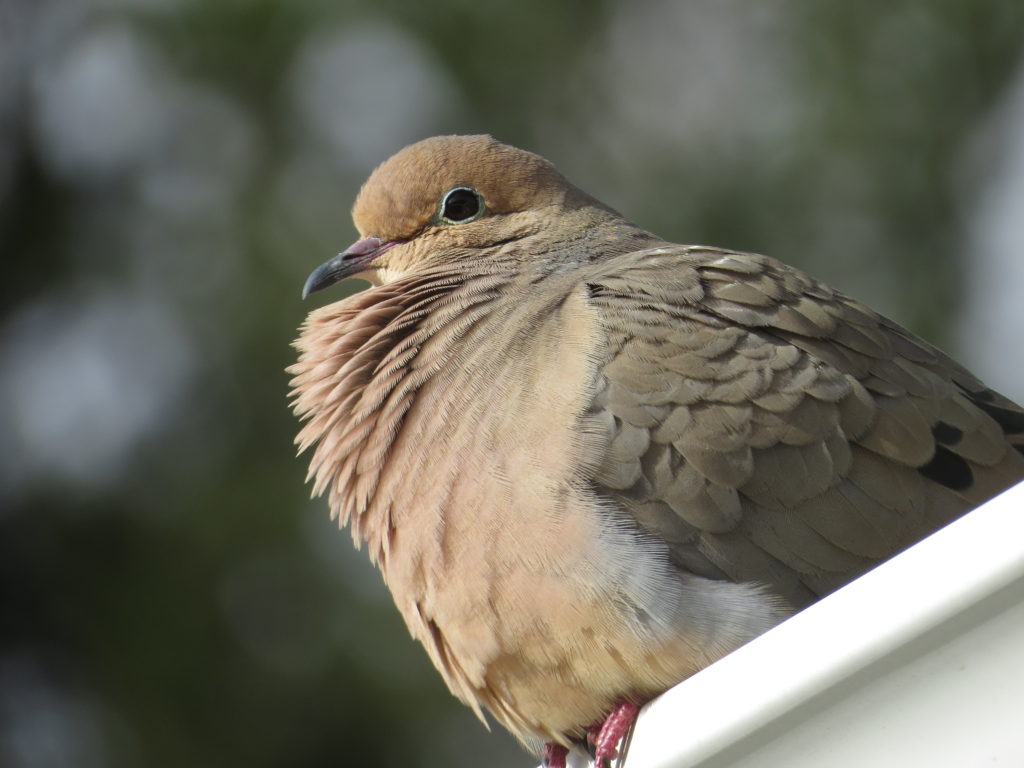
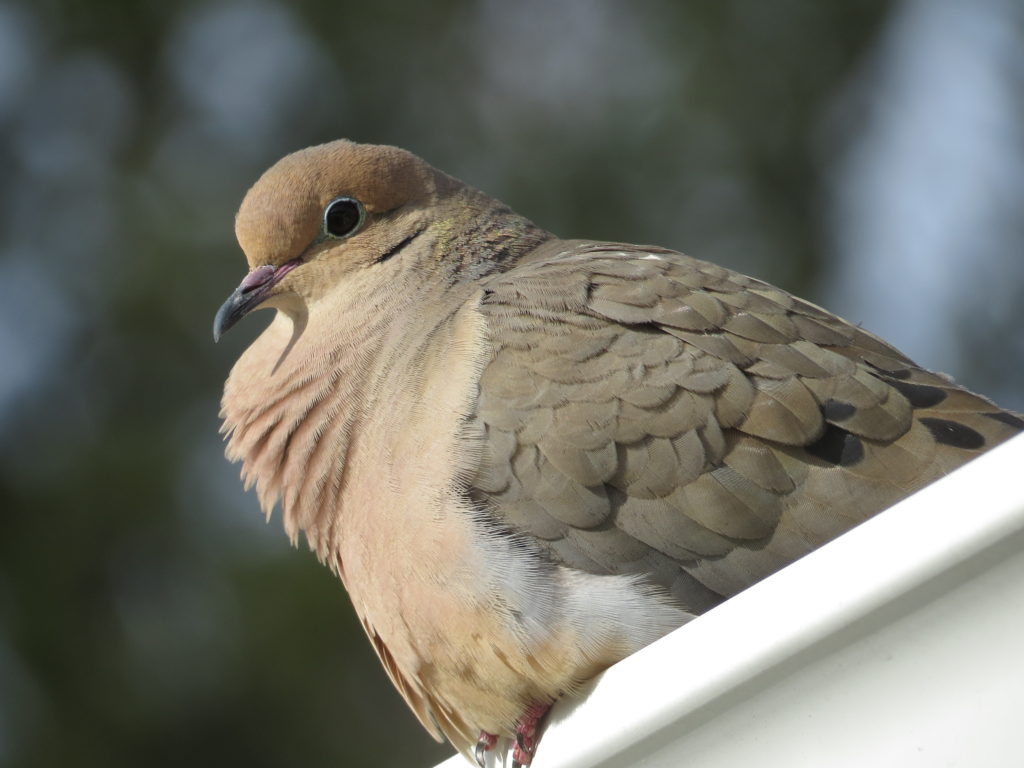
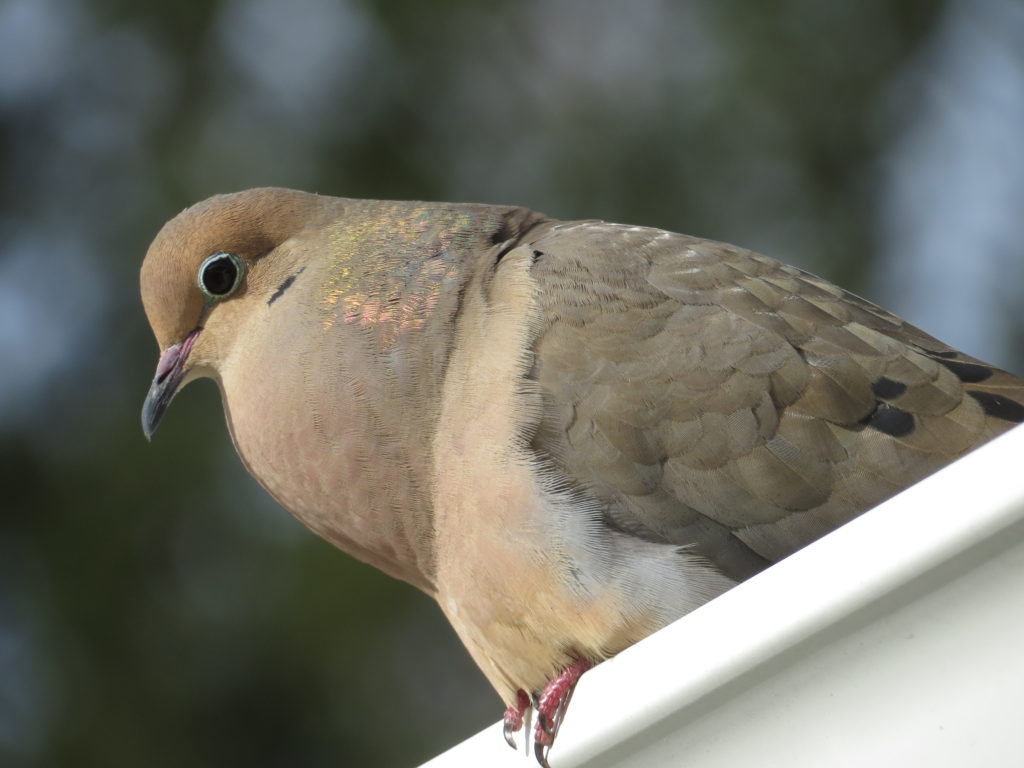
Cardinals are so expressive with their crest of red feathers. Carotenoids from fruit and insects are responsible for the red pigment. Often during Winter or after molting, their back feathers turn a gray color until the richness of Spring when they change to brilliant crimson.
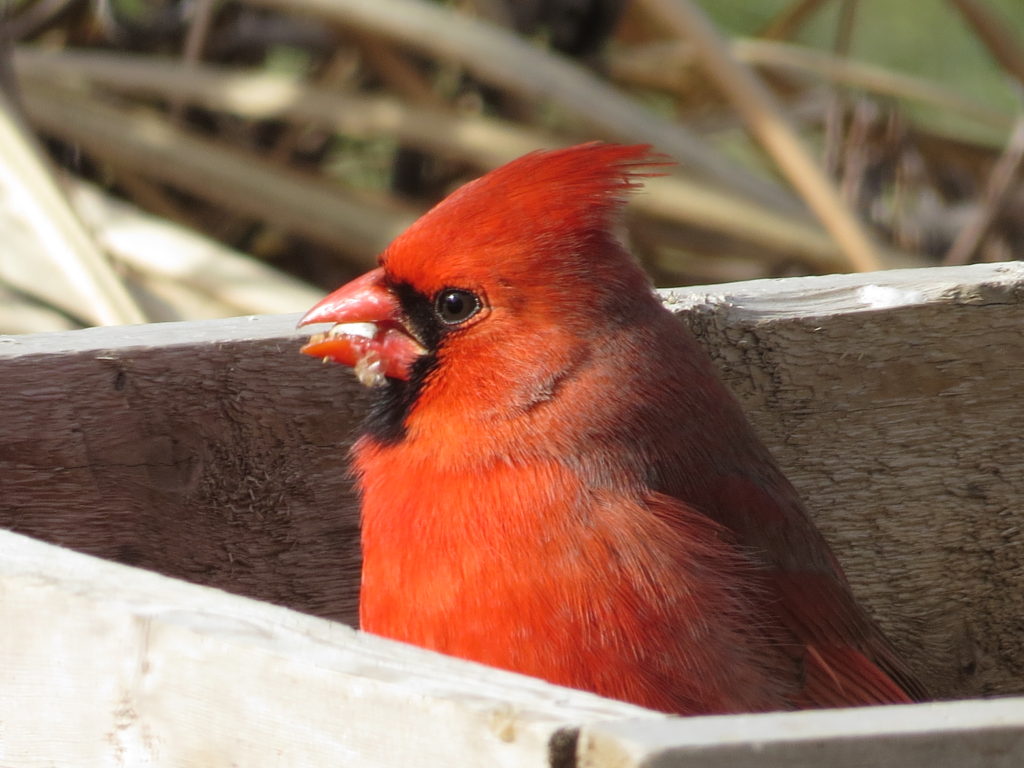
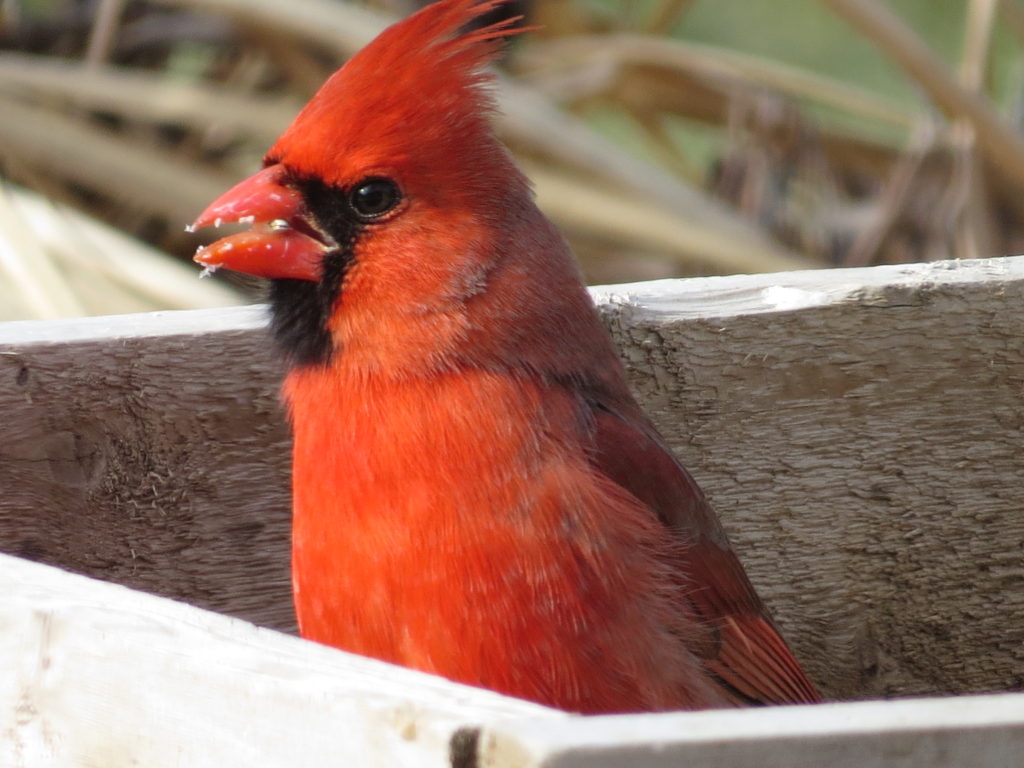
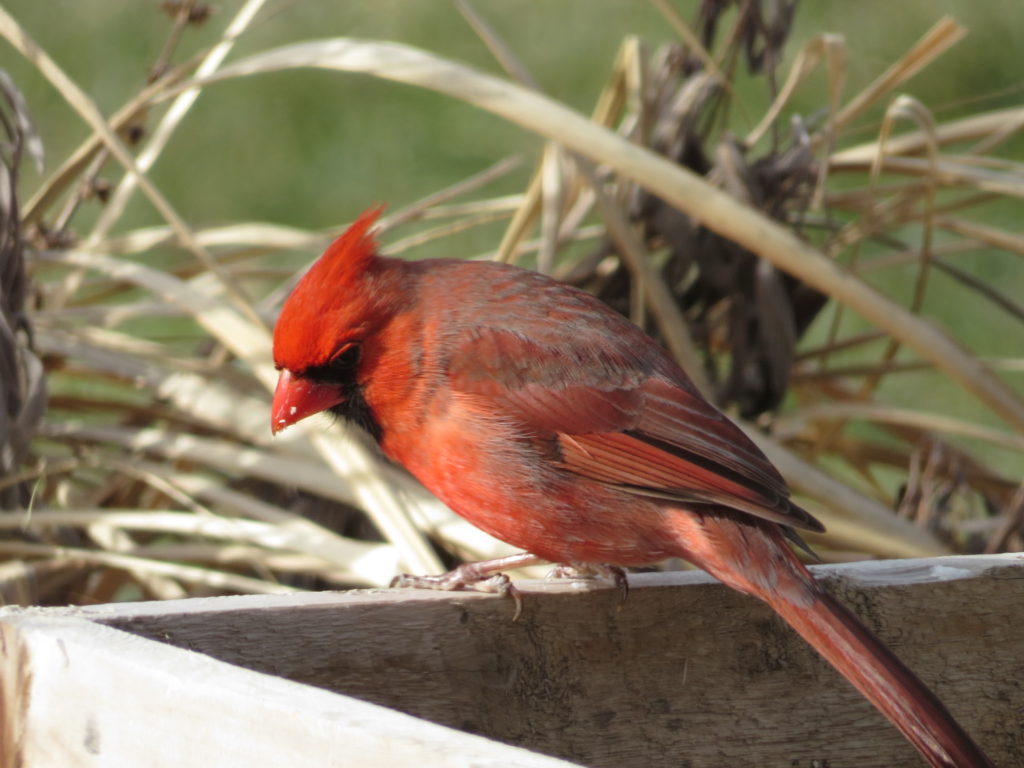
The ice was gone from the lakes at Saint John’s Arboretum, and an immature Loon swam all by himself in the big lake. His head feathers were transitioning to the shiny black of adults, and his eyes were still black instead of red. Pretty feathers of hope.
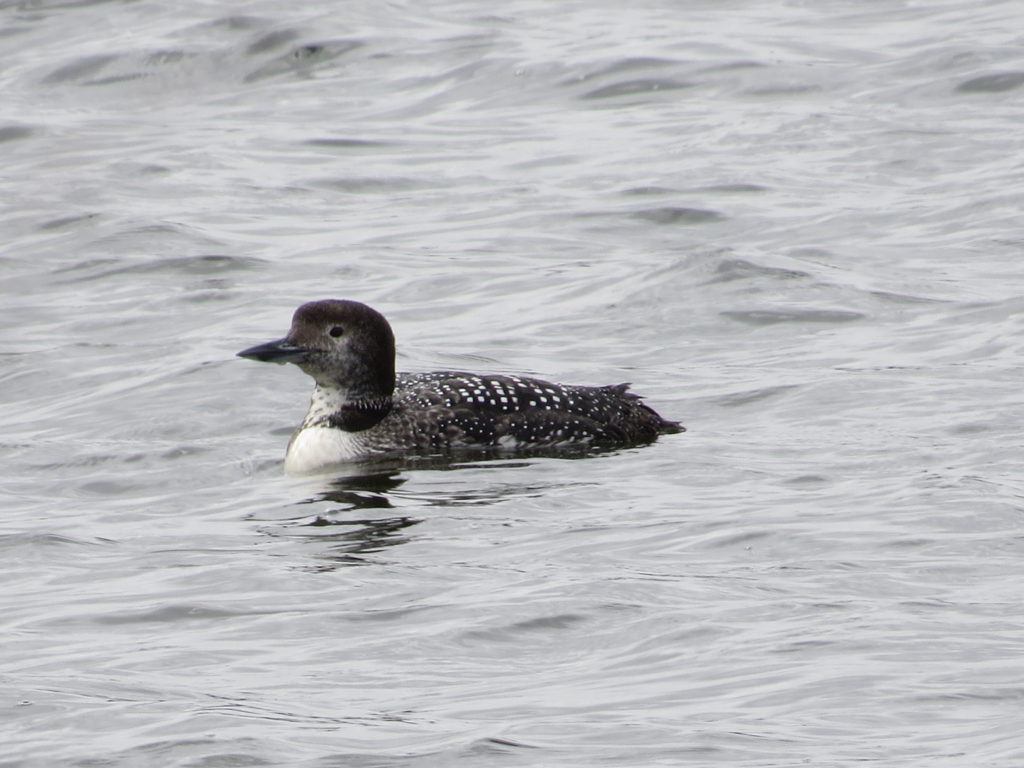
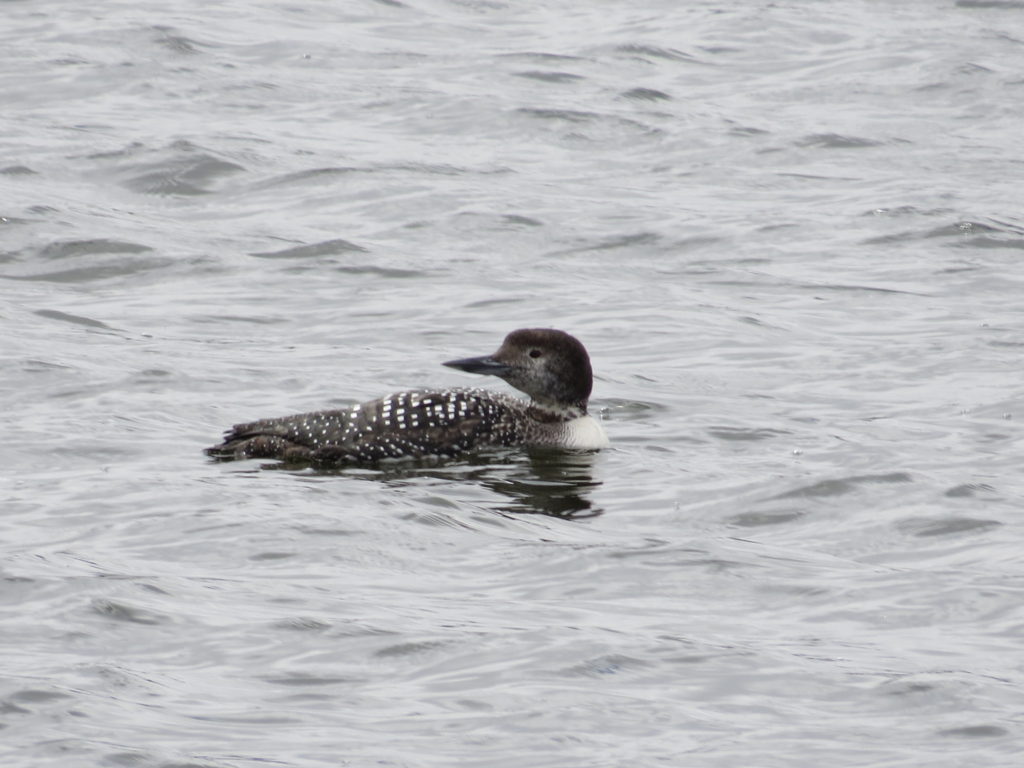
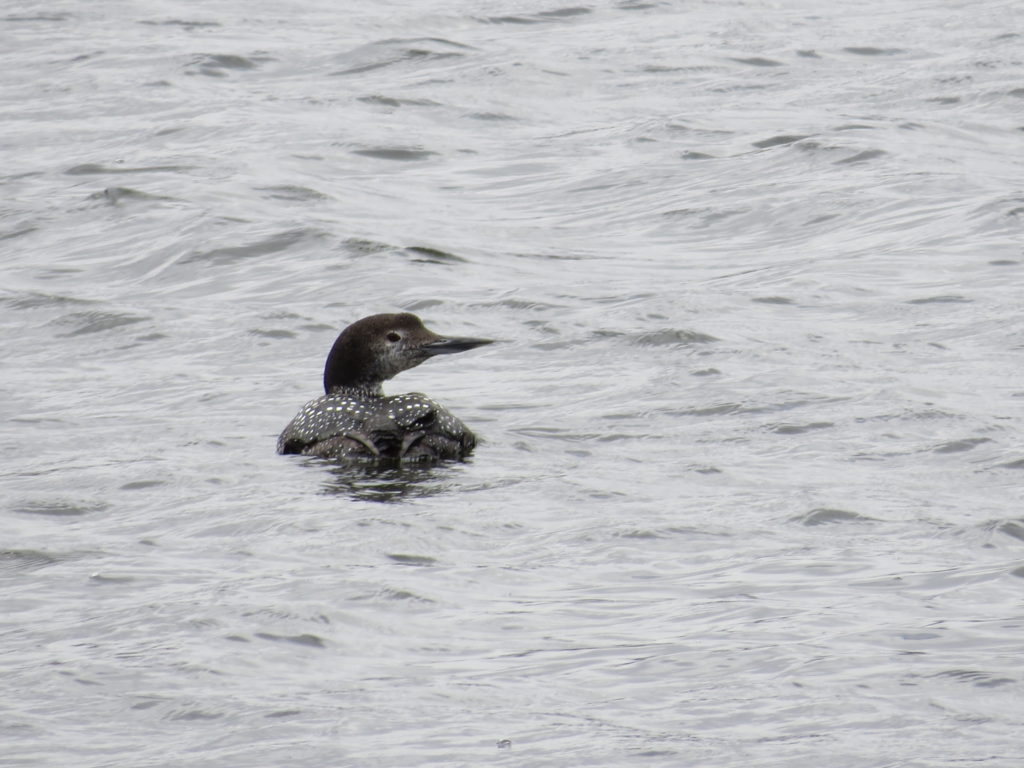
On one side of the boardwalk through the marsh swam a protective male Canadian Goose. His watchful eye and wary honks let me know that he was not going to go far from his companion.

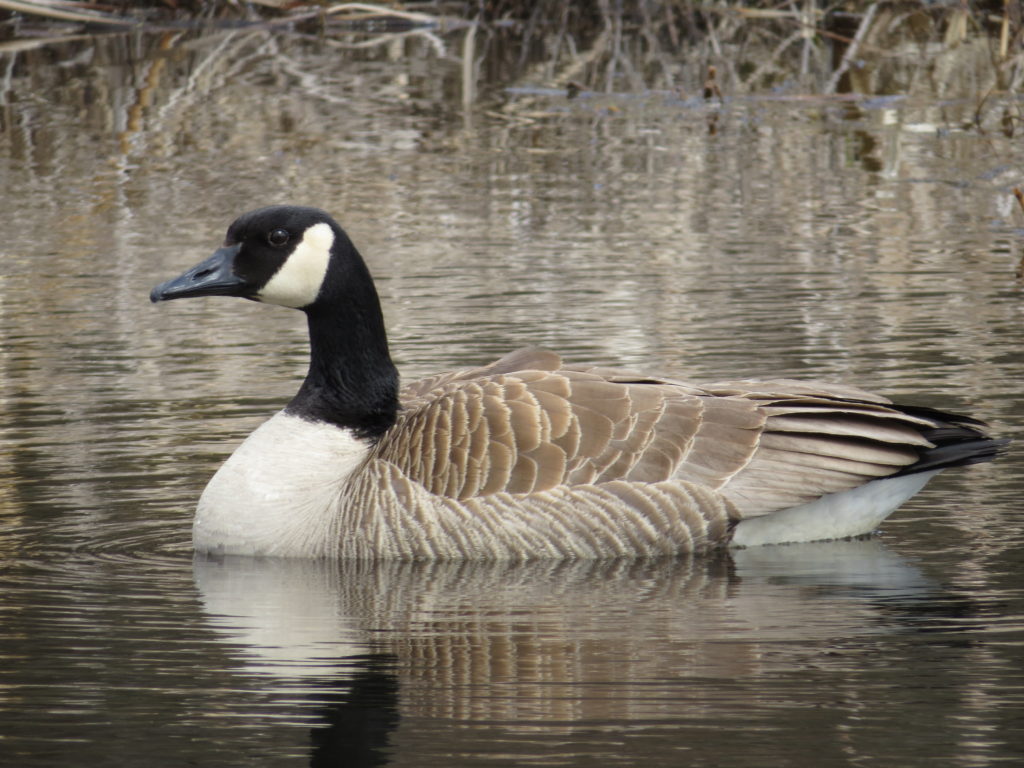
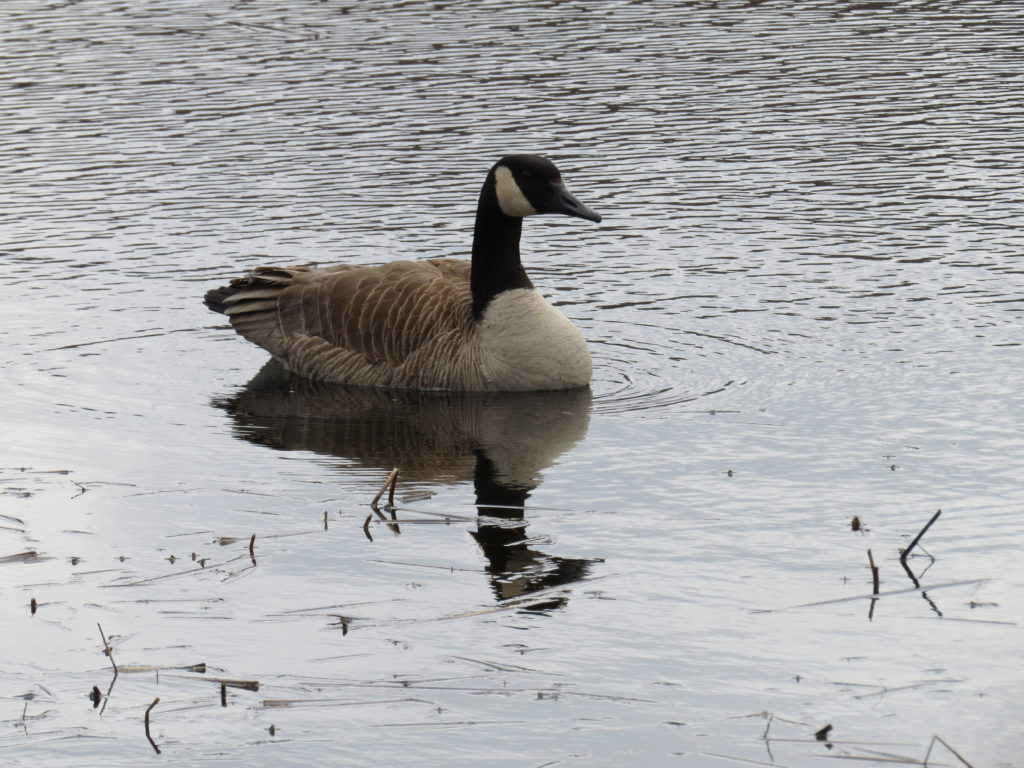
She was on the other side of the boardwalk, peeking over the rushes. I’m sure their nest was not far away.
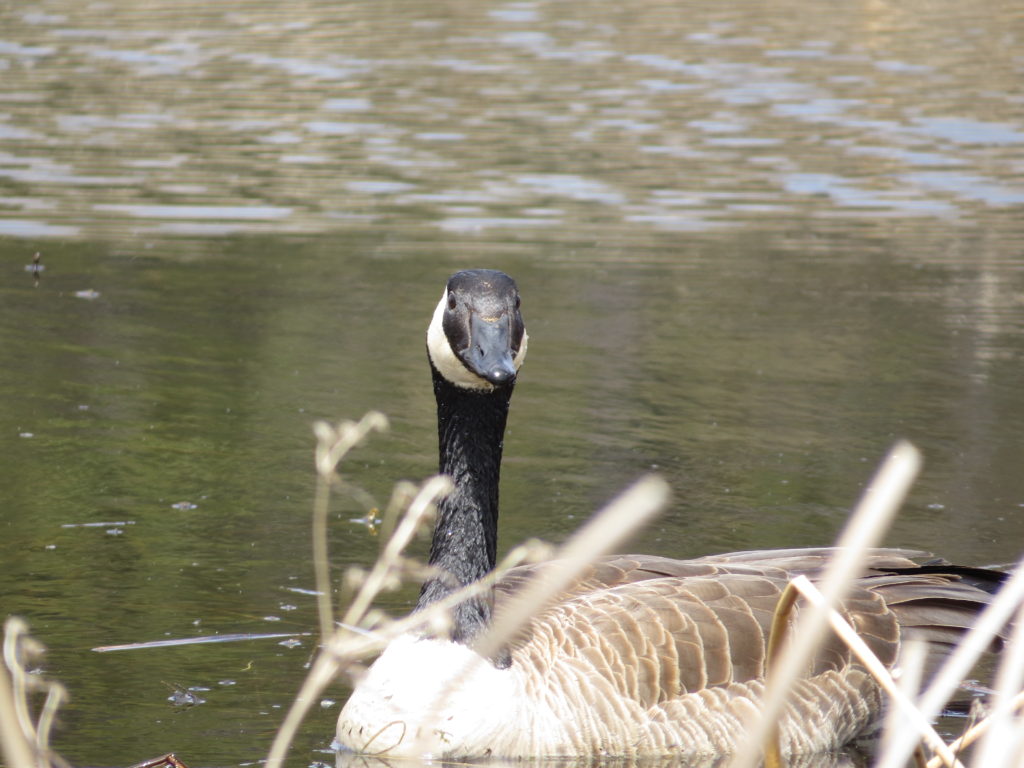
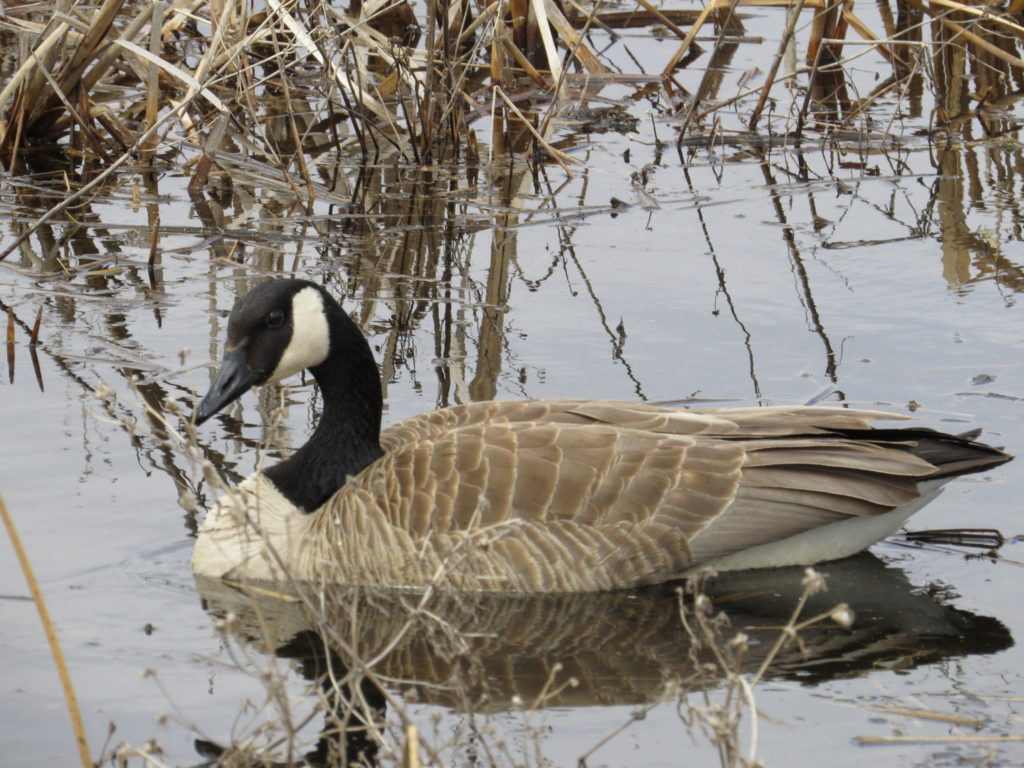
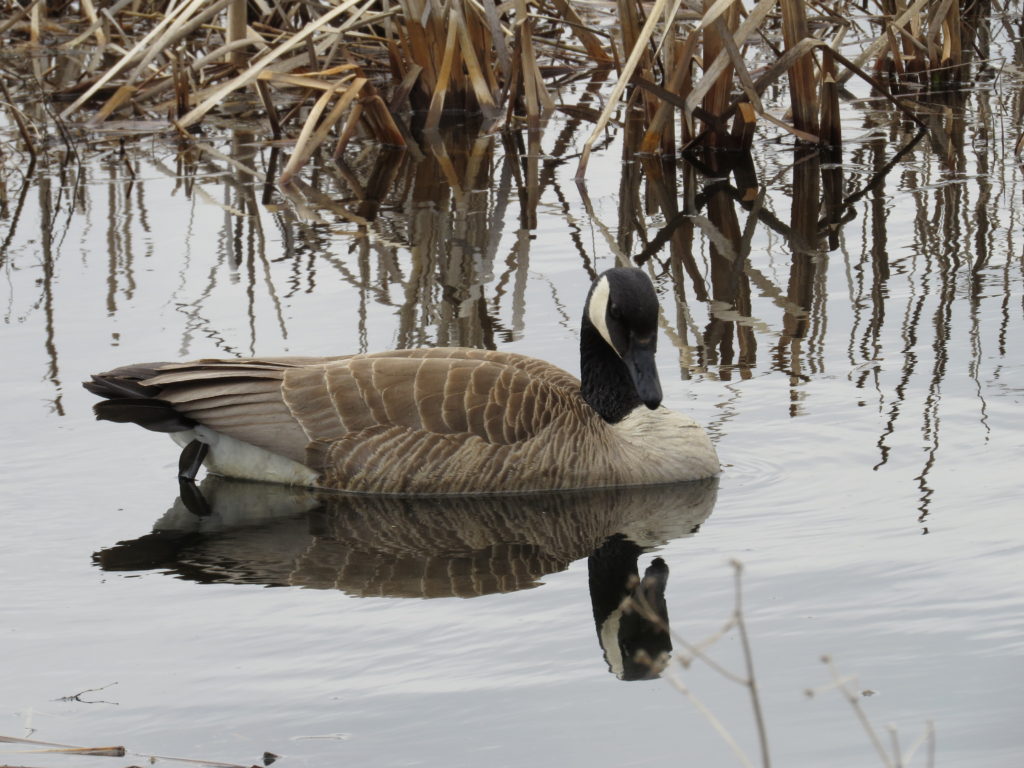
A nesting pair of Trumpeter Swans was hiding in the cattail rushes, almost unseen.
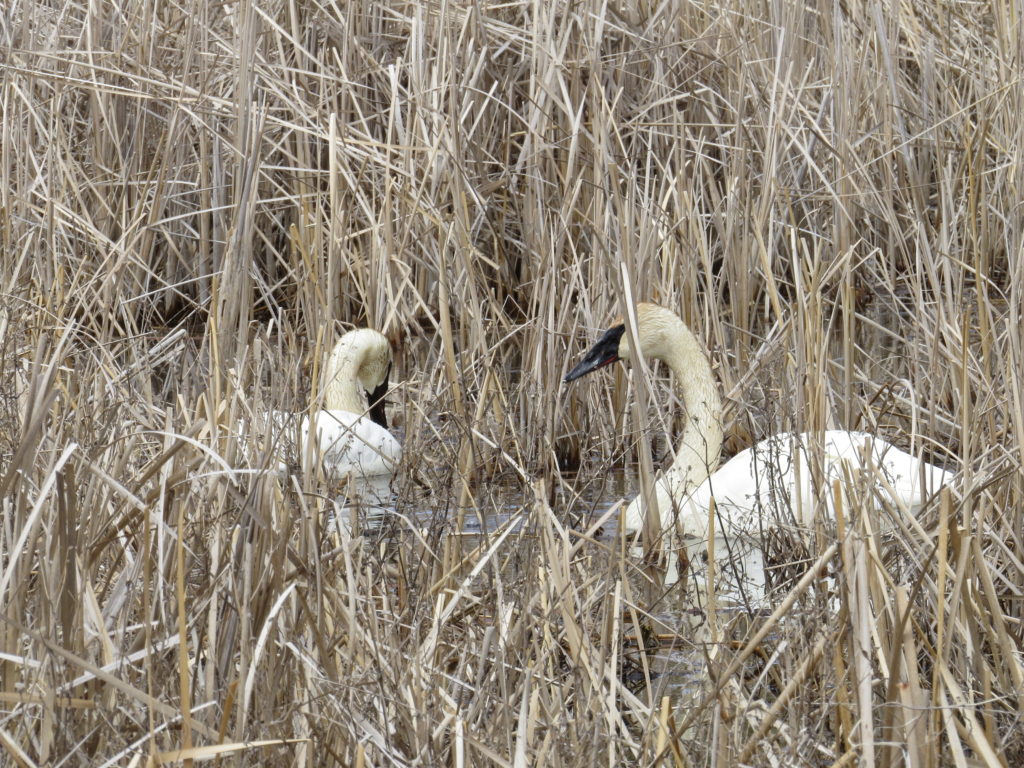
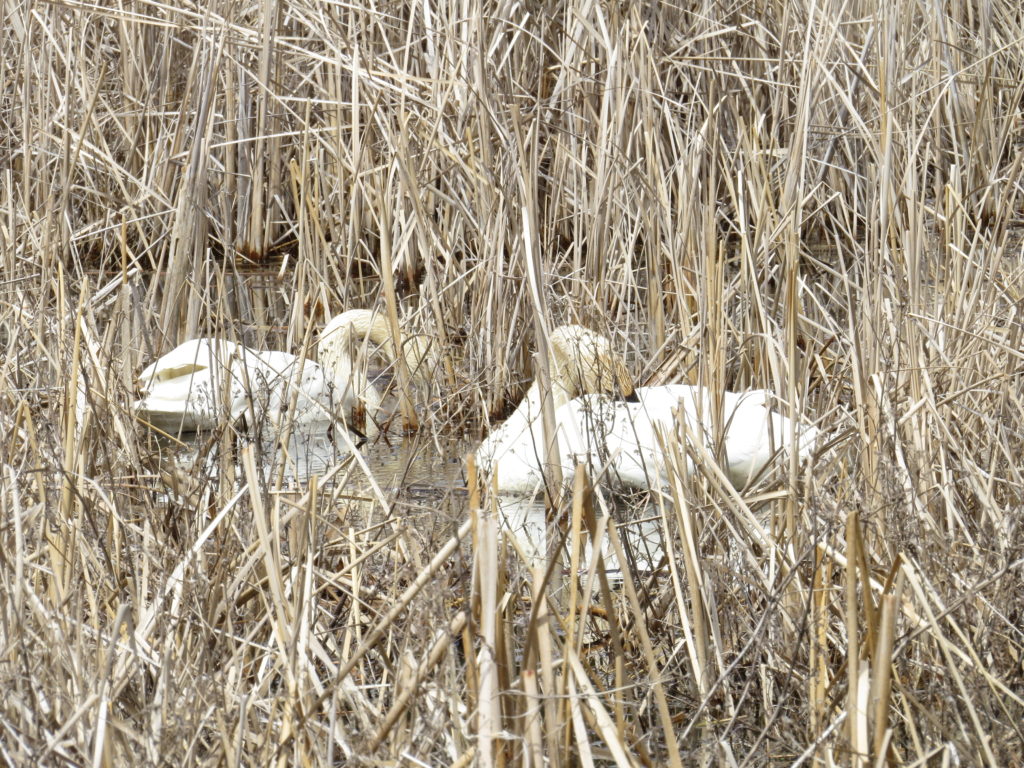
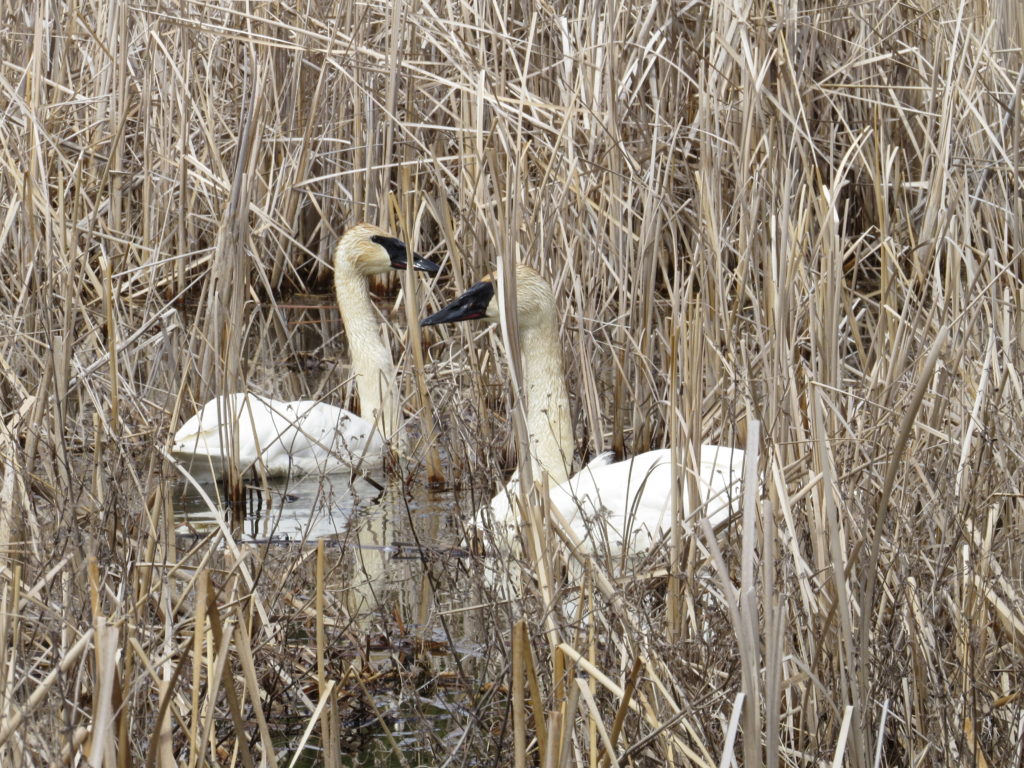
Feathers were everywhere. Portraits of hope. My Earth Day sadness is still clinging to me, and I don’t see a pathway to change with all the turmoil, disdain, and division in the world. But if hope is the thing with feathers, my soul has been reminded of that with abundance this week. With each bird I see or feather I find, I will be reminded of hope. With each song or coo I hear, I will remember to have faith. With each pair of loyal companions making a new nest for a new family, I will observe love. Mother Nature’s hope, faith, and love never stops at all.
I live in the city, so the birds I see are different from yours. Lots of them are coming to my feeder. And, I hear them singing with gusto, often waking me early in the morning before I was ready to wake up. When I see and hear them, I will remember your words: “With each bird I see or feather I find, I will be reminded of hope. With each song or coo I hear, I will remember to have faith. With each pair of loyal companions making a new nest for a new family, I will observe love.”
I think bird songs are one of the most relaxing sounds in the world–what a great way to wake up!